The introduction of the Trident C4 still left the overall Trident program with an unresolved issue. The new Ohio class submarines were being built with much larger missile tubes than were required for the Poseidon/Trident I, and a new missile had been promised to fill them. What that missile would look like was an open question. Initially, the plan had been to increase range from the 4000 nm of the Trident I to as much as 6000 nm, allowing the missile to reach Moscow from a submarine off the coast of South Africa. But this seemed unnecessary, and a number of factions within the defense establishment instead began to push for better accuracy, giving the new missile a true hard-target capability that previous SLBMs, focused on retaliatory attacks on enemy cities, had lacked.
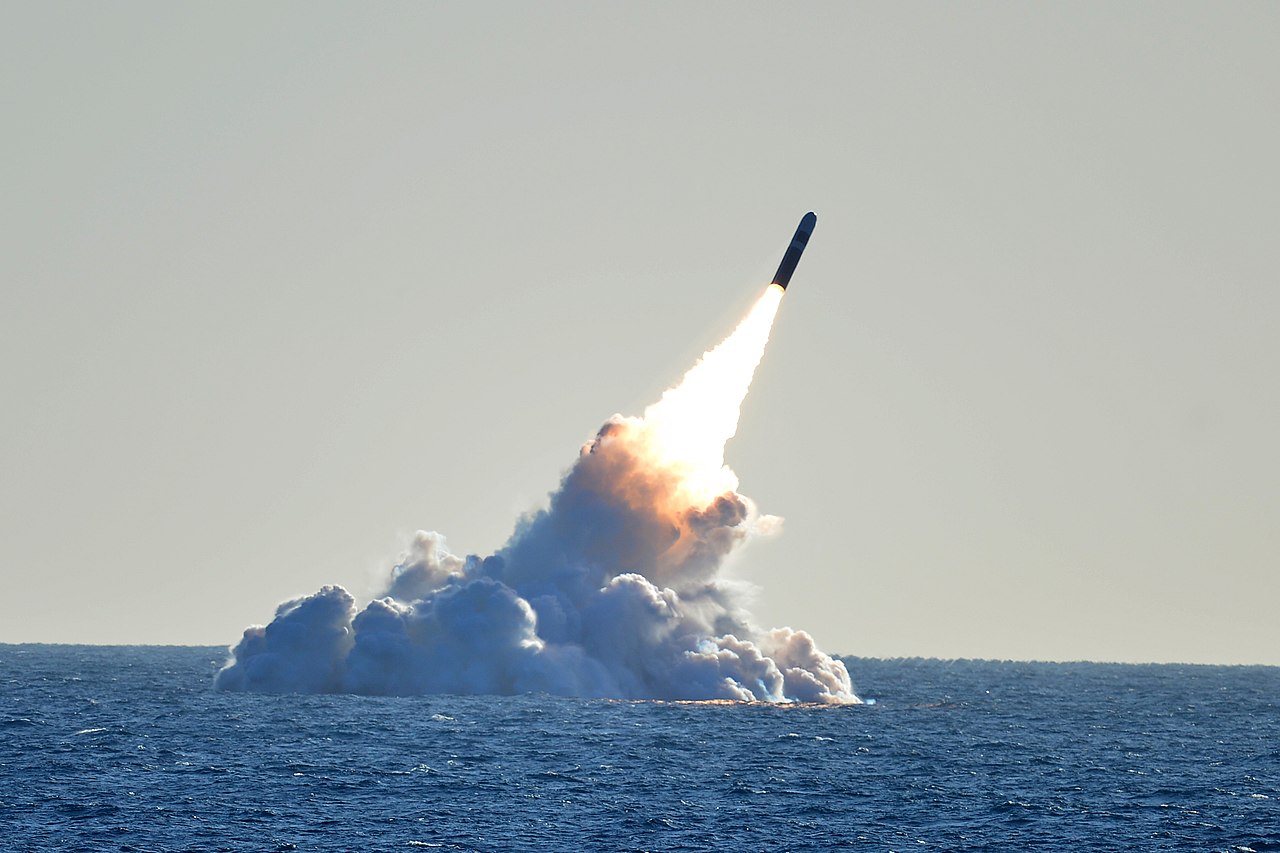
A Trident II is launched from Nebraska
Much of this drive came from a shift in US nuclear strategy, which began to turn away from the all-out nuclear war in the early 70s. Secretary of Defense James Schlesinger wanted more options to attack Soviet nuclear forces, and pushed the SPO to improve the accuracy of their missiles, starting a program to better understand the sources of error in the existing missiles, with the hopes of improving not just the Trident I but also the Trident II. Several options came out of the program to reduce CEP,1 including fitting a receiver to use the new GPS satellites, a radar sensor that would look at the terrain as the warhead came in, and improvements to the stellar-inertia guidance system used on Trident C4. Eventually, the last option won out, due to concerns about the reliability of GPS during a nuclear war and a lack of confidence in the radar seeker, particularly due to issues with testing against inland targets.
But there was still the question of what the missile itself would look like, once Congress finally got around to approving funding in 1977. Options included a C4 that could take advantage of the improvements in accuracy, a stretched C4 to give more range, a C4 with a larger-diameter lower stage (designated C5) and two options for a larger D5 missile, one of which would have a C4-type third stage with warheads wrapped around it, the other (initially favored) which would have a clear deck to give more payload space, with the capability to carry 14 W76s to 4,000 nm or a smaller payload to greater range.
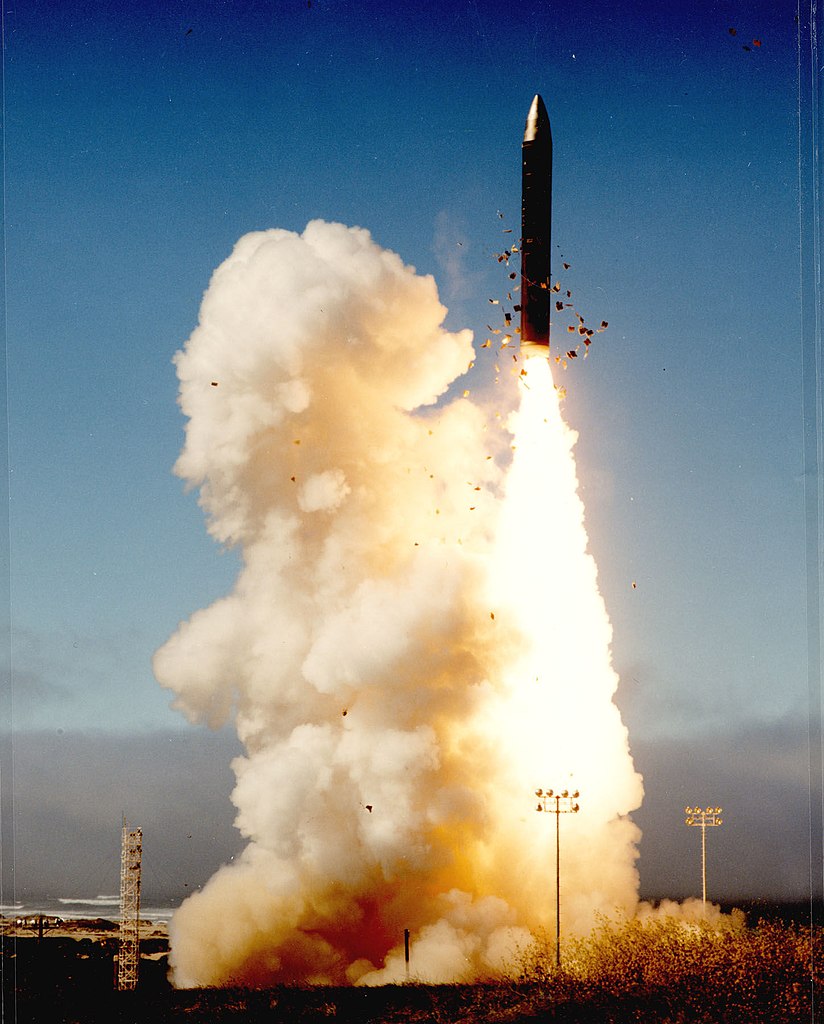
An MX test launch
Into all of this came MX, the Air Force's program for a new ICBM. Growing concern over the Soviet's ability to destroy missile silos meant that plans for a conventional silo deployment were killed off in the mid-70s, leaving the Air Force scrambling to find a more survivable basing model. Plans included basing missiles on the south side of hills (where the incoming warheads, approaching at about 25°, would hit the hill too far away to damage the silo), rail-mobile missiles capable of being deployed across the nation during a crisis, the "racetrack" scheme, which would see 200 missiles deployed across thousands of shelters in Utah and Nevada and periodically shifted between them, hardened silos capable of digging themselves out after a near miss, pushing ICBMs out the back of transport aircraft and the so-called "dense pack" scheme, which packed super-hardened silos close together and relied on the cloud of debris raised by the first hit to take out following warheads. In the end, all of these failed for technical or political reasons, and while 50 MXs were eventually deployed in converted Minuteman silos, the future of the ICBM program, traditionally the home of high-accuracy counterforce missiles, hung in the balance for several years.
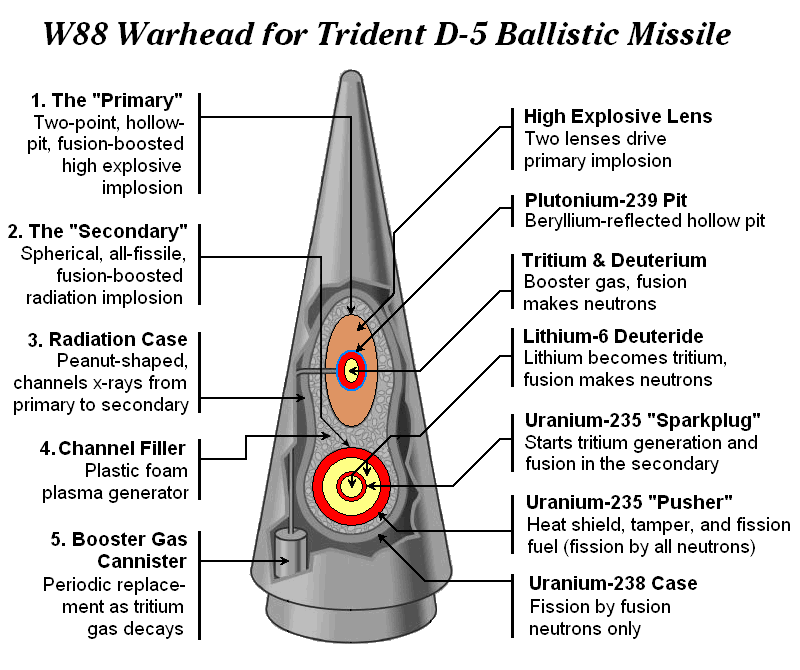
Uncertainties around MX, and the invulnerability of the SSBN force, created an obvious incentive for a hard-target capability on the part of Trident II. This would also mean a new warhead. The existing W76 had a yield of only 100 kT, not quite enough for real hard-target capability, and the weapon labs wanted more work, so the decision was made to fit Trident II with a bigger warhead, which entered service as the 475-kT W88. Both Livermore and Los Alamos put together designs, and the Navy selected Los Alamos primarily because it was willing to use conventional explosives, which were lighter than the safer insensitive explosives Livermore used. This was controversial, as the increased weight of the heavier warhead had forced the designers to go back to a C4-style third stage, with warheads wrapped around it. Nor was it the only step designers took to save weight and volume. The warhead has an ellipsoidal primary to reduce volume, driving a spherical secondary mounted behind it. Many components of this are made out of unusual materials, with both the fission tamper and the radiation case being designed to contribute to the nuclear yield, resulting in the highest yield-to-weight and yield-to-volume ratio in any current US nuclear weapon. The RV was also engineered for greater accuracy, with the carbon-carbon shell modified to ablate in a more symmetrical manner, even if there was rain, which had previously been a serious hindrance to accuracy.
To assuage fears about the hard-target capability of the D5 missile, the bus was designed to be able to take the W76 as well as the W88, and also to carry a maneuvering warhead, to be used in case missile defense became a serious concern. This proved a useful capability when the Rocky Flats Plant, where the weapon's pits were being built, was shut down for massive environmental violations. The result was the cancellation of W88 production with only about 400 of the 3,000 planned. Safety concerns have continued, with the Navy at one point choosing to load the warheads after the missile was onboard the submarine to reduce the risk of handling accidents.
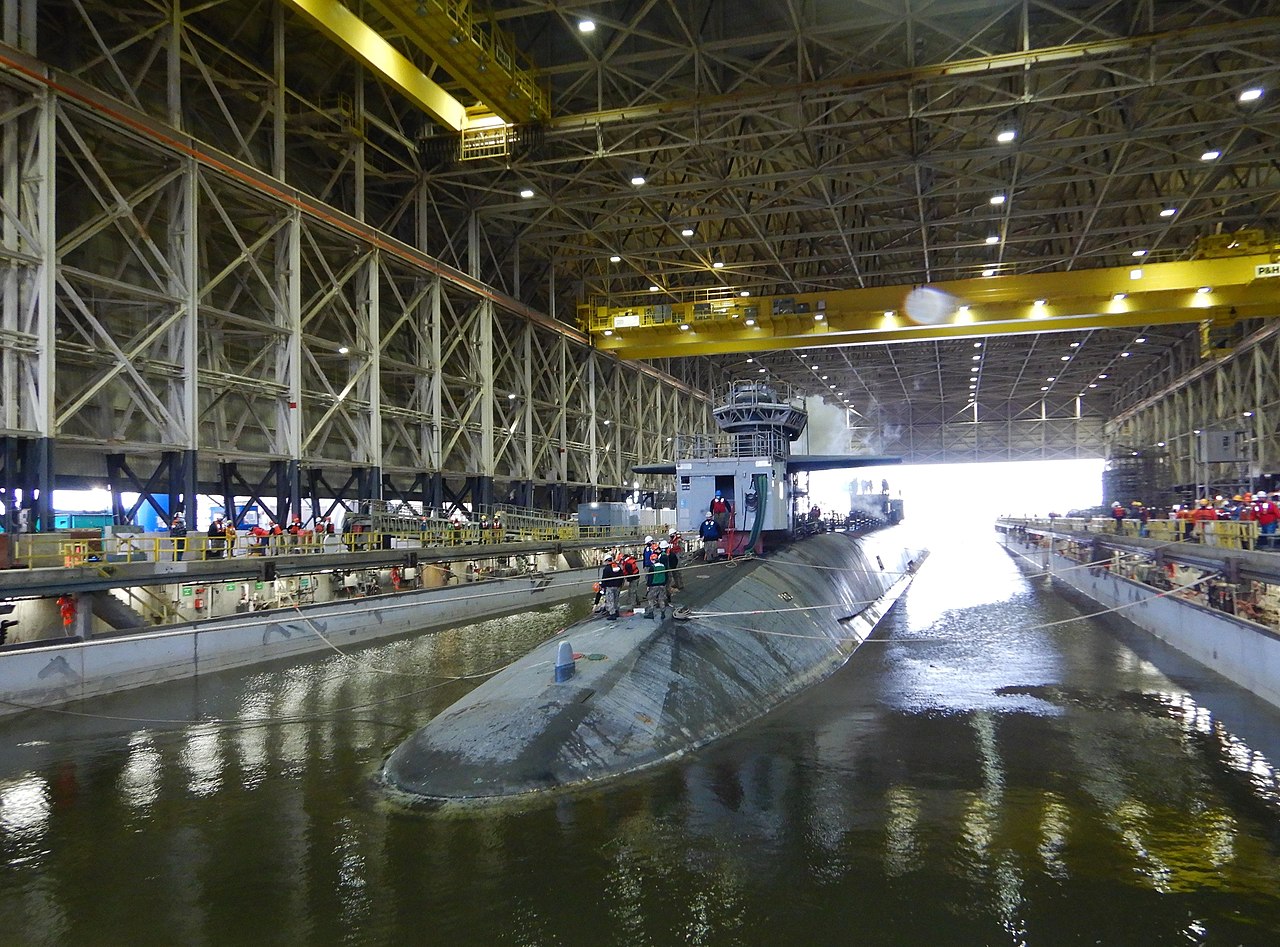
Tennessee enters the covered drydock at Kings Bay, Georgia
Achieving the desired accuracy of 0.06 nm (about 370') at a range of 4000 nm2 would require a great deal of work throughout the system, and for the first time, accuracy was a hard requirement rather than a goal that could be traded off against other considerations. The angular gyros were not particularly critical, but the same was not true of the accelerometers, which had to be far more sophisticated than on previous SLBMs. Much of the improvement in accuracy rested on better computers, which could be programmed to compensate for various errors in the rest of the guidance system, such as gyro drift. Navigation also had to improve, with initial velocity being an error that the star sighting couldn't compensate for, requiring a doppler sonar to take readings off the sea bottom. Gravity errors were also a serious problem, but plans to fit onboard sensors were scrapped after it was decided that improved gravity mapping from survey ships and the Geosat satellite constellation could solve the problem more cheaply. Lastly, the electrostatic gyroscopes previously used as a monitor on the submarine's own inertial navigation system had proven their reliability and were now given sole responsibility for keeping track of the sub's position.
The missile itself was fairly conservative, largely using the technology of the C4. The biggest change was the replacement of kevlar in motor casings with carbon fiber, a material that was seeing increasingly wide use in the aerospace industry, and which was easier to work with than kevlar. There was also a change in the launch system. Previous missiles had used a fixed-energy launch system, which meant that the missile came out faster for shallower launches. This hadn't been a problem before the D5, but the bigger missile would either be too slow if launched deep, or too fast if launched shallow. The solution was to turn a fixed-energy pyrotechnic charge into a variable-energy launcher by varying the amount of water injected and flashed to steam. For shallow launches, more water would be added, and the excess energy would be absorbed vaporizing it.
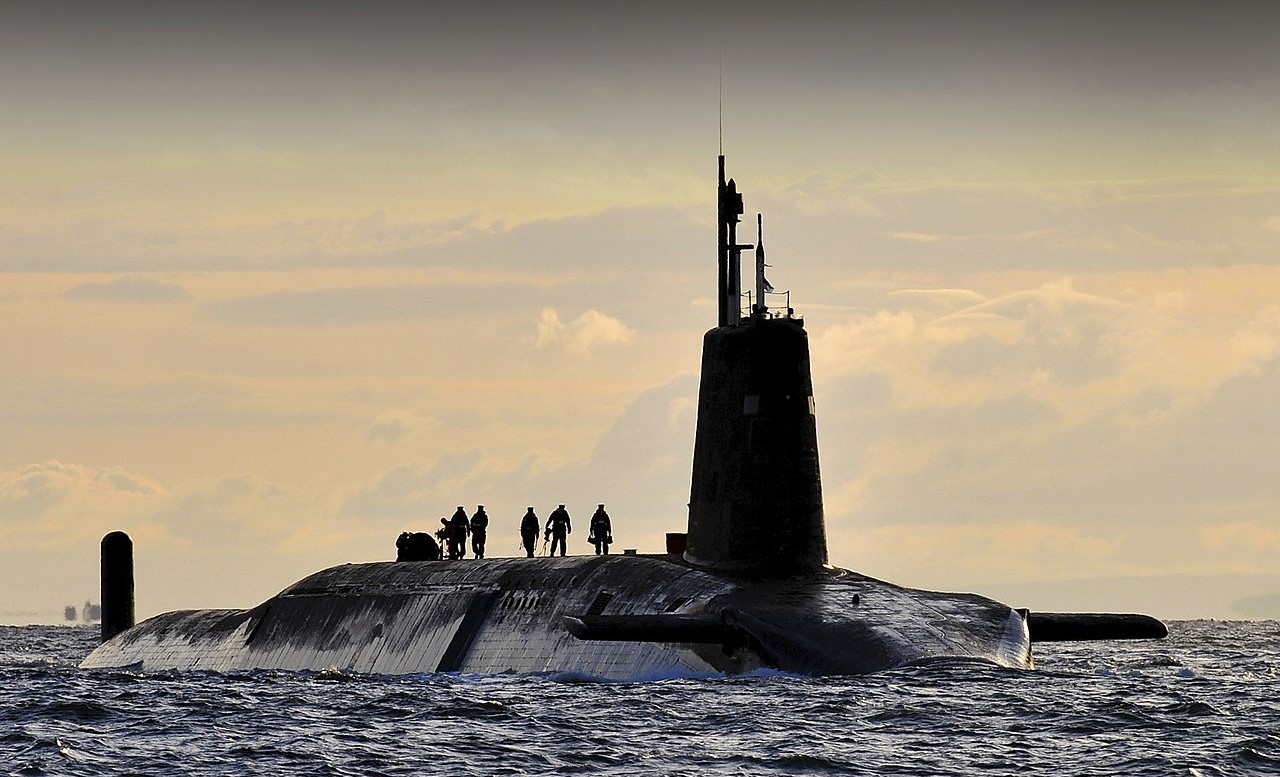
HMS Vanguard
Ultimately, the D5 missile entered service aboard Tennessee, the 9th Ohio class SSBN, in 1990, and today serves aboard 14 of the 18 boats of the class.3 The cancellation of the W88 means that many of the missiles were equipped with W76s instead, with the W88s presumably reserved for hard targets. The British, seeking a replacement for their Polaris boats, also joined the program, initially planning to buy the C4 before concerns about obsolescence and an American desire to strengthen the British deterrent led Margaret Thatcher to request the D5. The British missiles, carried by the four boats of the Vanguard class (which unlike the Ohios had only 16 missiles) and equipped with a British-designed warhead, come out of a common pool with the American ones, saving greatly on maintenance costs. There is currently no replacement on the horizon for the D5, which will be carried by the American Columbia and British Dreadnought classes, the replacements for the Ohios and Vanguards. A life extension in the early 2000s extended the missile's life through 2040, and another extension seems to be in the works, with a planned out of service date of 2080 or so, matching the life of the new SSBNs. As things stand, Trident will be the backbone of the Western deterrent for most of the 21st century.
1 Circular Error Probable, the radius in which 50% of warheads were expected to land. ⇑
2 The maximum range of the missile is somewhat longer, and varies depending on how many warheads are loaded, but 4000 nm gives enough sea room to hide and reduces the area that needs to be precisely surveyed for maximum accuracy. ⇑
3 The first four were converted to carry Tomahawks and special forces. ⇑

Comments
I thought there would be some mention of the fairly impressive failure of the first underwater D5 launch. The video is unclassified and available on YouTube: https://youtu.be/7Z-3fjg4dYY